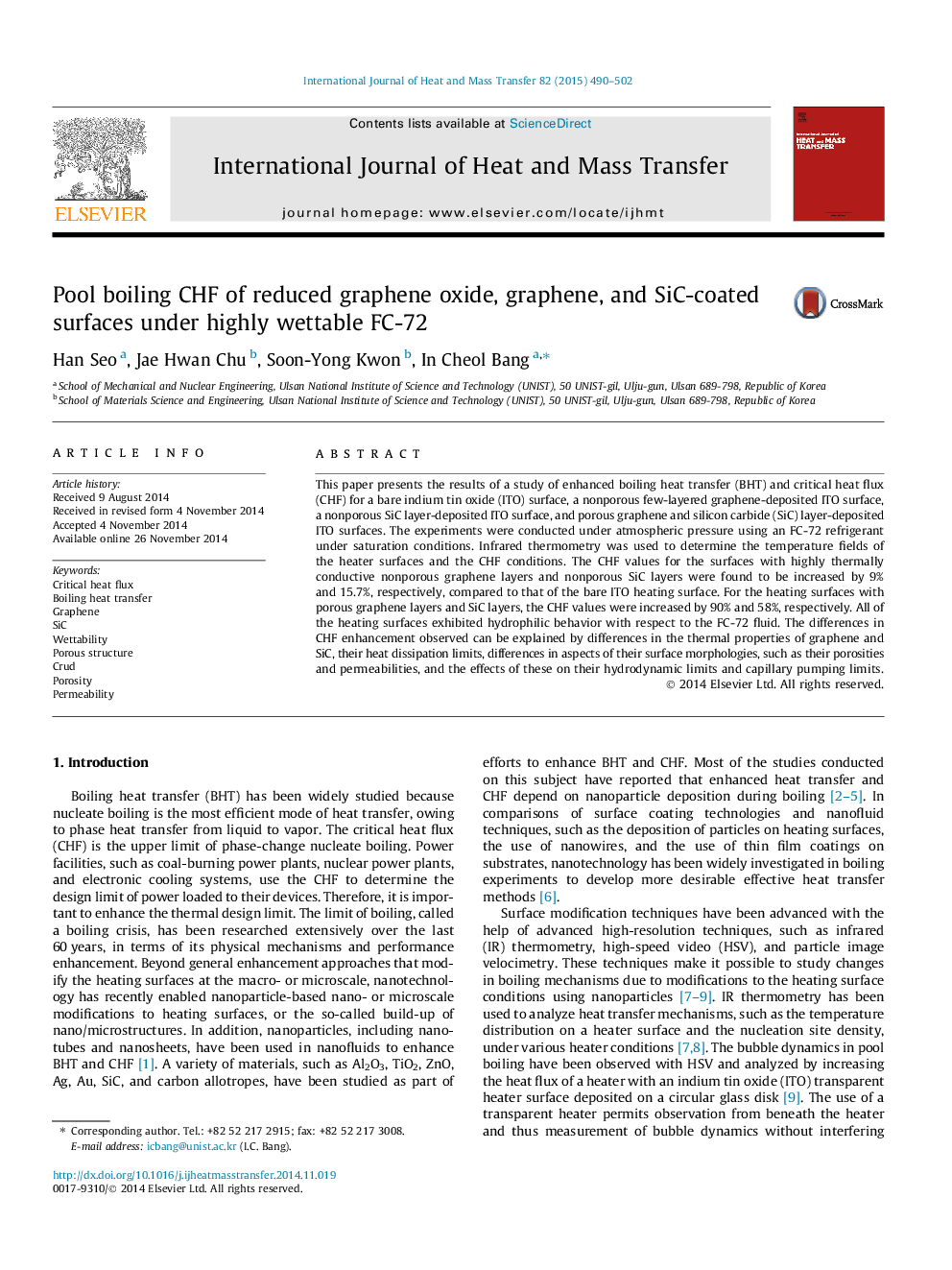| Article ID | Journal | Published Year | Pages | File Type |
|---|---|---|---|---|
| 657366 | International Journal of Heat and Mass Transfer | 2015 | 13 Pages |
This paper presents the results of a study of enhanced boiling heat transfer (BHT) and critical heat flux (CHF) for a bare indium tin oxide (ITO) surface, a nonporous few-layered graphene-deposited ITO surface, a nonporous SiC layer-deposited ITO surface, and porous graphene and silicon carbide (SiC) layer-deposited ITO surfaces. The experiments were conducted under atmospheric pressure using an FC-72 refrigerant under saturation conditions. Infrared thermometry was used to determine the temperature fields of the heater surfaces and the CHF conditions. The CHF values for the surfaces with highly thermally conductive nonporous graphene layers and nonporous SiC layers were found to be increased by 9% and 15.7%, respectively, compared to that of the bare ITO heating surface. For the heating surfaces with porous graphene layers and SiC layers, the CHF values were increased by 90% and 58%, respectively. All of the heating surfaces exhibited hydrophilic behavior with respect to the FC-72 fluid. The differences in CHF enhancement observed can be explained by differences in the thermal properties of graphene and SiC, their heat dissipation limits, differences in aspects of their surface morphologies, such as their porosities and permeabilities, and the effects of these on their hydrodynamic limits and capillary pumping limits.
